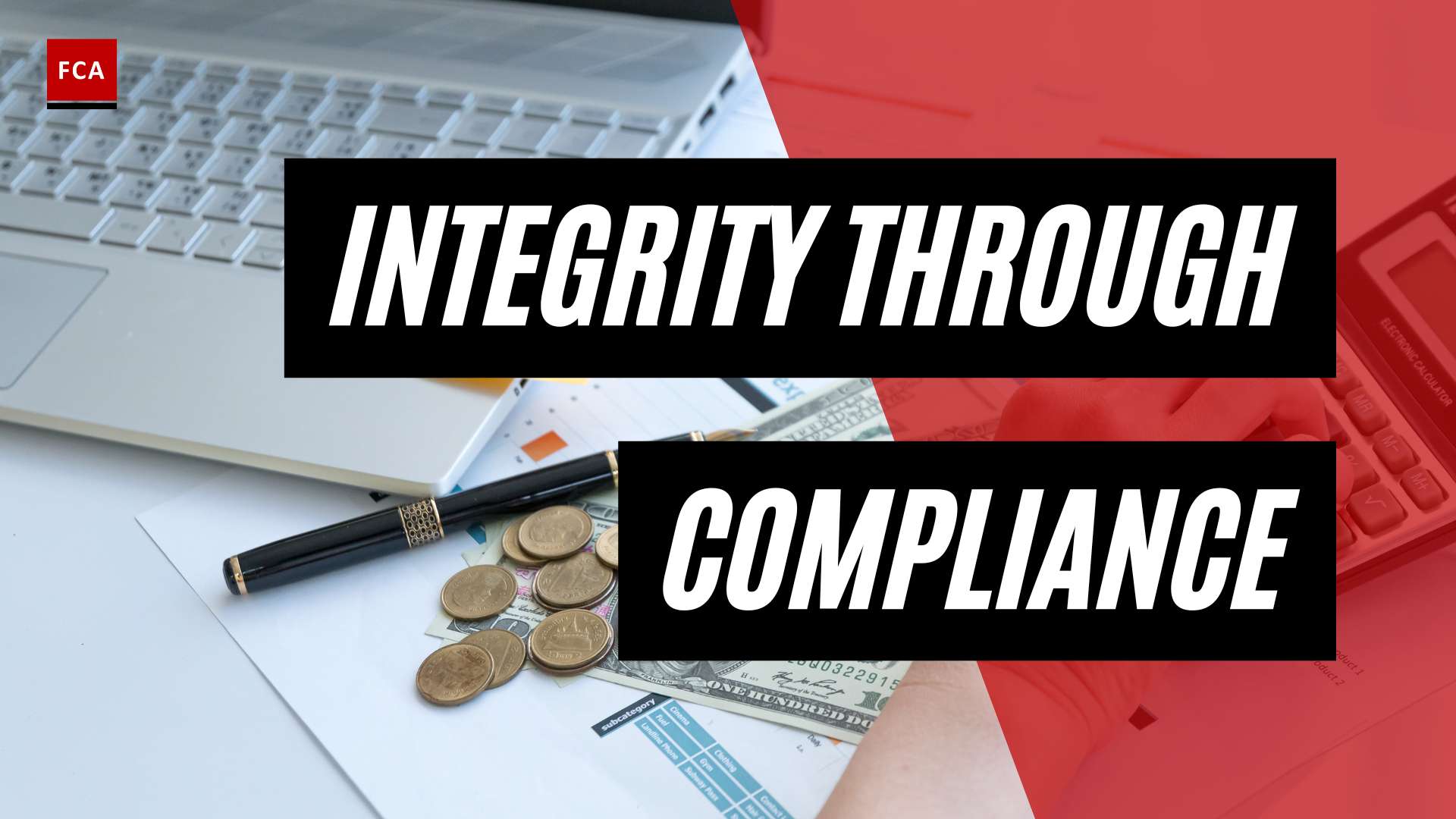Introduction to Financial Crime in Cryptocurrency
The financial landscape is witnessing a significant shift with the rise of cryptocurrencies. As these digital assets gain popularity, they also become a potential avenue for financial crime. Understanding these threats is crucial for devising effective cryptocurrency AML guidelines.
The Rise of Cryptocurrency
Cryptocurrencies, digital or virtual currencies that use cryptography for security, have made a significant impact on the global financial scene. Over the past decade, they have moved from a niche interest to a mainstream financial asset, with billions of dollars’ worth of cryptocurrencies being traded daily.
This rapid growth of the cryptocurrency industry has ushered in new opportunities for investment and economic growth. However, it has also attracted the attention of financial criminals who see the anonymous and decentralized nature of cryptocurrencies as an opportunity to launder money, finance terrorism, and engage in other illicit activities. This has led to the need for robust AML policies for cryptocurrency exchanges.
Financial Crime Threats in Cryptocurrency
Financial crime in the cryptocurrency sector takes many forms. Money laundering is a key concern, where illicit funds are moved through cryptocurrency transactions to obscure their origin. Cryptocurrencies are also used to finance terrorism, with terrorist groups taking advantage of the anonymity provided by cryptocurrencies to secure funding.
Moreover, the inherent volatility of cryptocurrency markets makes them an attractive target for market manipulation schemes such as pump-and-dump or wash trading. Cybercriminals also pose a significant threat, with cryptocurrency exchanges often being the target of hacking attempts aimed at stealing cryptocurrencies.
Given these threats, it is crucial for cryptocurrency businesses, especially exchanges, to implement robust anti-money laundering (AML) measures. These include Know Your Customer (KYC) procedures, transaction monitoring, and risk assessment strategies. To learn more about the specific AML requirements for crypto exchanges, you can refer to our article on crypto exchange AML requirements.
Understanding the financial crime threats in the cryptocurrency sector is the first step towards creating effective AML strategies. As the industry continues to evolve, so too will the nature of these threats, making it crucial for AML professionals to stay informed and adaptable. The development and implementation of comprehensive cryptocurrency AML guidelines are key to mitigating these risks and ensuring the integrity of the cryptocurrency sector.
Understanding Anti-Money Laundering (AML)
The understanding of Anti-Money Laundering (AML) measures is crucial to financial professionals, especially in the rapidly evolving world of cryptocurrency. This section will delve into the basics of AML and compare its application in traditional finance and cryptocurrency.
The Basics of AML
Anti-Money Laundering (AML) is a set of procedures, laws, and regulations designed to stop the practice of generating income through illegal actions. In most cases, money launderers hide their actions through a series of steps that make it look like money coming from illegal or unethical sources was earned legitimately.
AML laws and regulations target activities including market manipulation, trade of illegal goods, corruption of public funds, and tax evasion, and other activities that can harm the financial system. AML regulations require financial institutions to conduct due-diligence procedures to detect and prevent such illicit activities.
| Key Elements of AML | Description |
|---|---|
| Customer Identification Program (CIP) | Verifying the identity of clients and maintaining records |
| Compliance Officer | A designated professional responsible for implementing AML programs |
| Ongoing Training Program | Continuous training of personnel on AML regulations and internal policies |
| Independent Audit Function | Regular review of the AML program’s effectiveness |
AML in Traditional Finance vs. Cryptocurrency
While AML principles remain the same, their application can significantly differ in traditional finance and the cryptocurrency sector due to the inherent differences between these two realms.
In traditional finance, AML measures are well-established, with clear regulatory guidelines. Financial institutions, such as banks, have dedicated compliance departments to ensure adherence to AML rules. They implement customer due diligence, monitor transactions, report suspicious activities, and maintain detailed records as per the regulations.
On the contrary, the cryptocurrency sector, characterized by its decentralized and anonymous nature, presents unique challenges in implementing AML measures. Despite these challenges, with the growing recognition of cryptocurrencies as a legitimate asset class, the need for effective AML regulations is more crucial than ever.
Cryptocurrency exchanges, similar to traditional financial institutions, are required to comply with AML regulations, which include verifying users’ identities (Know Your Customer or KYC procedures), monitoring transactions, and reporting suspicious activities. For a detailed understanding of AML requirements for crypto exchanges, consider our article on crypto exchange AML requirements.
| Traditional Finance AML | Cryptocurrency AML |
|---|---|
| Well-established regulations | Emerging and evolving regulations |
| Centralized institutions | Decentralized operations |
| Easy traceability of transactions | Pseudonymous transactions |
| Established compliance departments | Compliance function in development |
Despite the differences, the ultimate goal of AML in both traditional finance and cryptocurrency remains the same – to prevent and detect activities related to money laundering, terrorist financing, and other financial crimes. Understanding this key premise is crucial for professionals striving to navigate through the intricacies of cryptocurrency AML guidelines.
Unraveling Cryptocurrency AML Guidelines
Understanding Anti-Money Laundering (AML) guidelines in the context of cryptocurrency is pivotal for professionals involved in compliance, risk management, and anti-financial crime. These guidelines play a key role in preventing and intercepting illegal activities, such as money laundering and terrorist financing, within the rapidly evolving crypto landscape.
The Importance of AML Guidelines in Cryptocurrency
The nature of cryptocurrencies, with their anonymity and decentralization, makes them potentially attractive for financial crime. This makes the implementation of robust AML guidelines essential in the crypto space. These guidelines help detect, prevent, and report suspicious activities that could be indicative of money laundering or other illicit financial transactions.
Effective AML guidelines facilitate a safer and more transparent cryptocurrency environment. They aid in building trust with regulatory authorities and users alike by demonstrating a commitment to legal and ethical operations. Moreover, stringent AML practices can help crypto exchanges and other crypto-related businesses to mitigate legal, operational, and reputational risks. For more information, visit our article on crypto exchange AML requirements.
Key Components of Cryptocurrency AML Guidelines
Several components make up the foundation of cryptocurrency AML guidelines. These key elements aim to create a comprehensive framework for detecting and combating financial crime in the crypto sphere.
-
Customer Due Diligence (CDD): CDD involves gathering and verifying information about customers to ascertain their identity and assess the risk they pose. This process often includes Know Your Customer (KYC) procedures.
-
Transaction Monitoring: AML guidelines necessitate continuous monitoring of transactions to identify and investigate suspicious activities. Advanced cryptocurrency AML software solutions are typically leveraged for this purpose.
-
Reporting: Any suspicious activities identified during transaction monitoring must be reported to relevant authorities. This usually involves filing Suspicious Activity Reports (SARs).
-
Record Keeping: Maintaining detailed records of all transactions, customer information, and AML efforts is essential. These records can be crucial for crypto exchange AML audits.
-
Risk Assessment: Regular AML risk assessments are necessary to identify and address any vulnerabilities in the AML program. These assessments should be conducted at least annually, or more frequently depending on the risk profile of the exchange.
For a deeper dive into the best practices for implementing these components effectively, refer to our article on cryptocurrency AML best practices.
To summarize, AML guidelines play a crucial role in promoting a transparent and secure cryptocurrency ecosystem. By adhering to these guidelines, crypto businesses can not only comply with regulations but also foster trust and confidence among their user base.
International AML Standards and Cryptocurrency
While AML guidelines for cryptocurrencies can differ across jurisdictions, it’s essential to understand the role of international regulatory bodies. One such entity is the Financial Action Task Force (FATF).
The Role of Financial Action Task Force (FATF)
The FATF is an intergovernmental organization that sets international standards to combat money laundering and terrorist financing. It plays a significant role in shaping the global perspective on AML, including guidelines for cryptocurrencies.
FATF’s influence extends to over 200 jurisdictions around the world, which look to its recommendations when forming their own AML policies. For the rapidly evolving world of cryptocurrencies, FATF’s guidelines provide a crucial roadmap for aligning the sector with international AML standards.
For more information on how AML guidelines are implemented in crypto exchanges, you can visit our article on crypto exchange AML requirements.
FATF Recommendations for Cryptocurrency
FATF’s recommendations for cryptocurrency are centered around transparency and accountability. Key points from their guidelines include:
-
Virtual Asset Service Providers (VASPs): FATF defines VASPs as businesses involved in the exchange, transfer, safekeeping, or issuance of virtual assets. These entities are required to adhere to the same AML obligations as traditional financial institutions.
-
The ‘Travel Rule’: This recommendation mandates VASPs to obtain, hold, and transmit required originator and beneficiary information for transactions.
-
Risk-Based Approach: VASPs should adopt a risk-based approach to AML compliance, meaning they should implement measures proportionate to the risks they face.
-
Supervision or Monitoring: Each jurisdiction should ensure that VASPs are appropriately supervised or monitored to prevent ML/TF risks.
-
Legal Sanctions: If a VASP fails to adhere to the AML rules, it should be subject to effective, proportionate, and dissuasive sanctions.
Understanding these recommendations is crucial for anyone working in compliance or risk management in the crypto sector. They provide a blueprint for what comprehensive AML compliance for crypto exchanges should look like.
As cryptocurrencies continue to gain traction, the role of FATF in setting international AML standards will be increasingly important. To ensure the crypto sector is not misused for illicit activities, it’s essential that businesses stay up-to-date with FATF’s recommendations and take proactive steps to implement them. For more insights on AML software solutions, audits, and best practices for crypto exchanges, you can check out our collection of articles here.
Implementation of AML in Crypto Exchanges
Implementing robust Anti-Money Laundering (AML) measures in crypto exchanges is crucial to combat financial crime in the cryptocurrency sector. This involves a systematic approach that includes Know Your Customer (KYC) procedures, transaction monitoring and reporting, and risk assessment and management.
Know Your Customer (KYC) Procedures
KYC procedures form the cornerstone of effective AML implementation in crypto exchanges. These procedures involve verifying the identity of customers and understanding the nature of their transactions to prevent illicit activities such as money laundering or terrorist financing.
Key elements of KYC procedures in crypto exchanges include customer identification, verification of identity using reliable and independent data, and ongoing monitoring of transactions. These measures help ensure that crypto exchanges adhere to the regulatory standards and cryptocurrency AML guidelines. For more detailed information on KYC procedures for cryptocurrency exchanges, you can refer to our article on kyc procedures for cryptocurrency exchanges.
Transaction Monitoring and Reporting
Regular transaction monitoring is a critical part of AML implementation in crypto exchanges. It involves tracking customer transactions to identify suspicious activities that may indicate money laundering or other types of financial crime.
Crypto exchanges are required to report any suspicious transactions to the relevant authorities. This process involves analyzing transaction patterns, identifying anomalies, and providing timely and accurate reports to facilitate investigations.
Automated cryptocurrency AML software solutions can significantly enhance the efficiency and accuracy of transaction monitoring and reporting. These tools use advanced technologies to detect and report suspicious activities, thereby strengthening the AML framework of crypto exchanges. For more insights on AML monitoring for crypto transactions, check out our article on aml monitoring for crypto transactions.
Risk Assessment and Management
Risk assessment and management involve identifying and evaluating the potential risks associated with money laundering and terrorist financing in crypto exchanges. The risk assessment process includes assessing the customer’s risk profile, the types of transactions, and the countries involved in the transactions.
Based on the risk assessment, crypto exchanges should implement appropriate risk management measures. These may include enhanced due diligence for high-risk customers, limiting transactions for certain risk categories, and conducting regular crypto exchange AML audits.
A thorough understanding of the risk landscape allows crypto exchanges to implement effective AML measures and ensure compliance with crypto exchange AML requirements. For a more comprehensive overview of risk assessment and management in the context of AML, refer to our article on cryptocurrency AML best practices.
Implementing AML measures in crypto exchanges is a complex but necessary process, involving a multi-faceted approach that includes KYC procedures, transaction monitoring and reporting, and risk assessment and management. By adhering to these measures, crypto exchanges can play a crucial role in preventing financial crimes and ensuring the integrity and security of the cryptocurrency sector.
Challenges and Future of AML in Cryptocurrency
As the adoption of cryptocurrencies continues to rise, so does the complexity of implementing effective Anti-Money Laundering (AML) measures. Understanding the current challenges and future prospects of AML in the cryptocurrency sector is crucial for professionals working in compliance and risk management.
Current Challenges in Implementing AML
Implementing AML measures in the cryptocurrency sector presents a unique set of challenges. The decentralized nature of cryptocurrencies, coupled with their global reach and anonymity, can make traditional AML tactics less effective.
One of the main challenges is the lack of unified or standardized cryptocurrency AML guidelines. Regulations can vary significantly from one jurisdiction to another, making it difficult for crypto exchanges to ensure compliance on a global scale.
| Challenge | Description |
|---|---|
| Decentralization | The decentralized nature of cryptocurrencies makes it difficult to track and control transactions. |
| Anonymity | Cryptocurrencies can be used anonymously, which heightens the risk of money laundering. |
| Regulatory Differences | The lack of standardized AML regulations for cryptocurrencies across jurisdictions complicates compliance. |
| Technological Advances | Rapid technological advances can outpace regulatory measures and AML technology. |
Moreover, technology is always evolving, and criminals are continually finding new ways to exploit the system. This calls for dynamic and proactive AML measures that can adapt and respond to these emerging threats.
The Future of AML in Cryptocurrency Sector
Despite the challenges, the future of AML in the cryptocurrency sector looks promising. Regulatory bodies worldwide are recognizing the need for robust AML compliance for crypto exchanges and are working to establish comprehensive guidelines.
The Financial Action Task Force (FATF), for instance, has already put forth recommendations to help countries establish AML regulations for cryptocurrencies. These recommendations are expected to shape the future of AML in the cryptocurrency sector, with more countries aligning their regulations with these international standards.
In addition to regulatory advancements, technology will also play a crucial role in the future of AML in cryptocurrencies. Advanced cryptocurrency AML software solutions are being developed to detect and prevent illicit activities. These tools use artificial intelligence and machine learning to identify suspicious patterns and transactions, providing an effective and efficient solution for AML compliance.
| Future Prospect | Description |
|---|---|
| Regulatory Advancements | Regulatory bodies worldwide are working to establish comprehensive AML guidelines for cryptocurrencies. |
| Technological Innovations | Advances in technology are leading to the development of sophisticated AML software solutions for cryptocurrencies. |
Navigating the complexities of AML in the cryptocurrency sector can be challenging, but with the right knowledge and tools, it is manageable. Staying abreast of the latest regulations, best practices, and technological advancements is key to ensuring effective AML compliance in this rapidly evolving sector.








